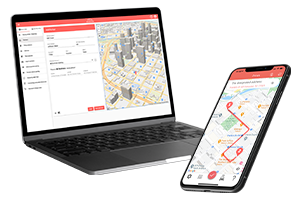February 5, 2020
Imagine you’re an ethical hacker. Or a designer working from home. An entertainer working on events as a Disney princess, face painter, a clown, or a mime artist. Or, you’re an independent contractor working on several projects at the same time as a consultant. You can be a ride-share driver if you’d like. Or somebody who has a regular job (in the sense that you’re an employee in the eyes of the IRS). However, you have an uncontrollable desire to do bridal makeup on your weekends for clients.
All the above-listed states are examples of gig jobs. They are temporary, sometimes done full time and other times they are part-time activities. Some are indefinite jobs, some have a definite timeframe.
The benefits of a gig job are obvious. Flexibility is maybe the biggest one, as you can work from home, you have the option to refuse a proposal if you don’t like the client or the idea, or simply if the time is inconvenient for you. In today’s project-focused world, you can have the satisfaction of working on multiple projects with the prospect of seeing them from the start, till they come to life.
Maybe that’s why nearly a third of workers in the U.S. participate in the gig economy (source: pymnts.com).
But what does it have to do with mileage logging?
The minute you accept your first gig job offer, the IRS will list you as a small business owner.
This may come as a surprise to you, especially if you have been an employee all your life. And that brings us to the next question: What does this classification mean exactly, tax-wise?
1. Firstly you will have to start paying self-employment taxes. They are similar to the FICA taxes, which are withheld from an employee’s pay. So, not only will your net profit be subject to income taxes, but you will be required to pay a 15.3% self-employment tax too.
2. As we mentioned, the FICA taxes won’t be withheld automatically from the profit you make as a small business owner. From now on, it is your responsibility to estimate your tax liability and pay the IRS the right amount when it comes to tax season. Save 20-25% of your profit, which is good practice in respect to estimating the tax rate you’ll have to pay.
3. Save for your retirement. If your side gig becomes your full-time job, bear in mind the first point of this list, since you will fall into that category. As nobody is responsible for you but yourself, you have to save up an acceptable amount for your retirement.
4. DEDUCT. DEDUCT. DEDUCT.
The answer to your question, how mileage logging and gig working are related: Tax deduction. The single biggest return on your taxes is on using your home as your main office and on your business mileage. Home office deductions are worth $5 per square foot up to 300 square feet of space. On top of that, you can also save up to an average of $5,600 on your mileage.
And with MileageWise that could be $7,000.
It is because with our web dashboard and app working together you can track your mileage with the most accuracy and you can even make up for your forgotten drives!
With the help of our AI Wizard feature, when using MileageWise we can make you a recommended, personalized mileage log, which will correspond to the exact mileage you have driven according to your odometer. You can even retrospectively reconstruct your mileage logs. In the process the Built-In IRS Auditor checks and corrects 70 logical conflicts with a smart algorithm, so your mileage log will be IRS-proof without a doubt, meeting every expectation.
On top of everything, if your home is your main place of business, going from your home to a client will count as a business trip and it will be deductible. If your home is not your main place of business, this exact same trip would be classified as a commute, which is not tax-deductible.
See? Deduct your mileage and get the most out of your home office deduction too. 🙂




